Generative Adversarial Networks (GANs), a form of artificial intelligence (AI), are transforming the quality assurance (QA) testing landscape by automating data generation, enhancing testing efficiency, and predicting errors more effectively. Let us see what we are going to learn in this blog:
💡 What Are GANs?: Learn about Generative Adversarial Networks fundamentals
🛠️ GANs in QA: Automate test data creation for more effective QA procedures.
⚙️ Benefits of GANs: Improve data diversity, and accuracy, and reduce manual effort.
🚧 Challenges of GANs: Handle issues with training complexity and data quality.
🔍 Bug Detection with GANs: Use GANs to identify hidden bugs in software.
🚀 Best Practices: Incorporate GANs into your CI/CD process gradually.
🔥 Performance Testing with GANs: Use realistic traffic simulation to assess system performance.
👁️ Visual Regression with GANs: Visual Regression with GANs may identify visual defects.
🔄 Data Augmentation: Increase the diversity of test data without creating it manually.
⚡ Training GANs: Overcome challenges of training GANs for QA testing.
What Are Generative Adversarial Networks (GANs)
- Structure and Operation: Generating and discriminating neural networks (the generator produces artificial data, while the discriminator assesses the data's realism) make GANs. As they get better over time, these networks compete with one another.
- Applications: Generating images (including 3D models) and automating quality assurance procedures by generating realistic test data are just a few of the activities that GANs are employed for in a variety of sectors. They also improve software testing, content production, and automation.
- Impact on Data Generation: GANs are essential as a generative AI model for enhancing testing procedures and fine-tuning data quality since they enable enterprises to produce enormous volumes of realistic synthetic data.

The Role of GANs in Automating QA Test Data Generation
The way QA teams handle the development of test data is revolutionized by Generative Adversarial Networks or GANs. Conventionally, QA testing necessitates a substantial quantity of heterogeneous data reflecting real-world situations, which is frequently laborious to gather and process by hand. By creating artificial data that replicates real-world settings and user behaviour, GANs can enhance the original dataset used in testing processes—alongside other models like variational autoencoders (VAEs)—automating this workflow.
- Generator in Action:
The part of a GAN called the generator is in charge of producing artificial data that replicates actual situations. The part of a GAN called the generator is in charge of producing artificial data that replicates actual situations, such as input images for testing visual components.
- A Discriminator at Work:
The part of a GAN called the discriminator is in charge of assessing the artificial data produced by the generator and contrasting it with actual data.By detecting errors, it enhances the discriminator network's outputs by determining whether the created data is realistic and helpful for testing.

- The Process of Adversarial Learning:
The ongoing exchange of information between the discriminator and generator, the discriminator getting more adept at identifying errors, and the generator getting better at producing realistic data is known as adversarial learning. This antagonistic interaction produces test data that is more accurate and realistic over time.
- Large-scale Automation:
By cooperation between the discriminator and generator, GANs generate large amounts of artificial data that faithfully mimic the actions of actual users. This is a perfect example of how generative and diffusion models can improve testing results while drastically lowering the amount of human effort needed to create test cases.
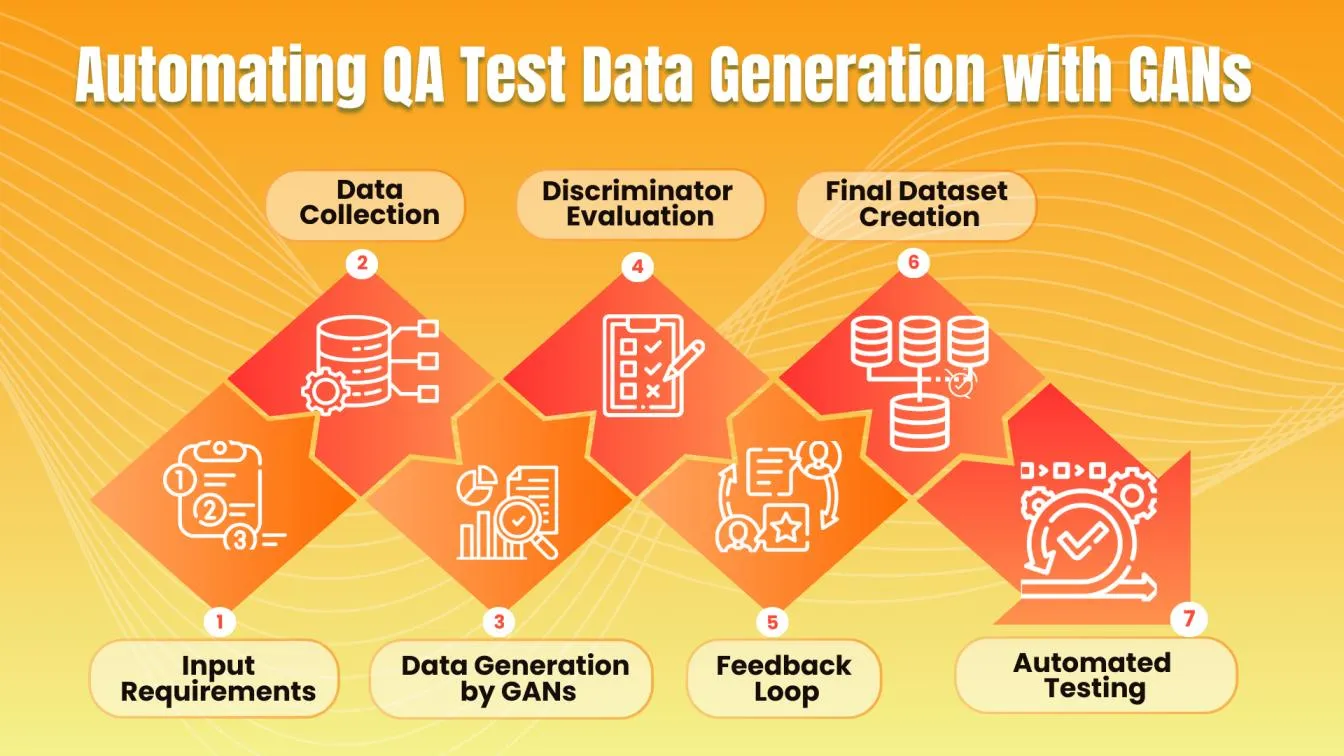
Enhancing QA Testing Efficiency with GANs: Key Benefits
📌 Data Diversity: GANs may produce a large variety of data types, including text, graphics, and even datasets related to Natural Language Processing (NLP), enabling more thorough test scenarios.
📌 Reduced Manual Work: QA teams can concentrate on higher-priority jobs, which will shorten the testing period overall, by automating the generation of test data.
📌 Improved Accuracy: By producing accurate and realistic data, and medical images, GANs improve test coverage, which improves results and helps identify bugs. GANs can also be utilized for language translation tasks, further showcasing their versatility.
📌 Cost Efficiency: Using GANs to automate test data creation can cut resource costs and do away with the requirement for costly manual labour.

Overcoming Challenges in Using GANs for QA Test Automation
Although GANs provide significant advantages, they also present certain challenges:
1. Training Complexity
Large volumes of high-quality data and high-performance technology, such as GPUs, can be necessary for GAN training. It takes experience and patience to balance the generator and discriminator while also considering the computational requirements necessary for effective training.
📚 Solution: To reduce initial setup time, use pre-trained models and cloud-based platforms to increase computing resources. Another way to speed up the training process is to collaborate with experts in AI or data science.
2. Quality Control of Synthetic Data
Maintaining the quality of synthetic data produced by GANs can be challenging, but using a code snippet to fine-tune models can streamline the process. Additionally, ethical considerations regarding the use of synthetic data, especially related to user privacy and data security, must be addressed.
📚 Solution: To enhance the discriminator's capacity to recognize erroneous or low-quality data, it should be routinely checked and adjusted. To improve accuracy, provide validation methods that assess the generated data against real-world examples.
3. Specialised Expertise
Not all QA teams may possess the technical expertise required to leverage GANs effectively in their testing processes.
📚 Solution: Join forces with AI/ML experts or train QA teams on the principles of machine learning. Closing the knowledge gap can also be facilitated by utilizing user-friendly platforms and solutions that make GAN integration simpler.
4. Data Availability
Not all QA teams may possess the in-depth knowledge of AI and machine learning needed to use GANs effectively.
📚 Solution: Join forces with AI/ML experts or train QA teams on the principles of machine learning. Closing the knowledge gap can also be facilitated by utilizing user-friendly platforms and solutions that make GAN integration simpler.

Implementing GANs for Bug Detection and Error Prediction in QA Testing
- Automated Bug Detection: GANs generate synthetic test cases that reveal potential vulnerabilities by utilizing a diverse training dataset, uncovering bugs that manual or traditional automated testing might miss.
- Real-World Scenarios: The generated test cases simulate diverse, real-world conditions, significantly reducing the reliance on manual testing and helping QA teams identify edge cases and rare issues that users may encounter.
- Adversarial Testing Process: The generator creates test cases, while the discriminator evaluates their relevance, leading to continuous improvement of test data without manual intervention.
- Simulating Extreme Conditions: GANs can simulate extreme user behaviours and stress test the system, ensuring it can handle even the most unpredictable scenarios.
- Enhanced Software Quality: This advanced approach allows for more comprehensive testing, resulting in smoother releases, fewer bugs, and a better user experience.
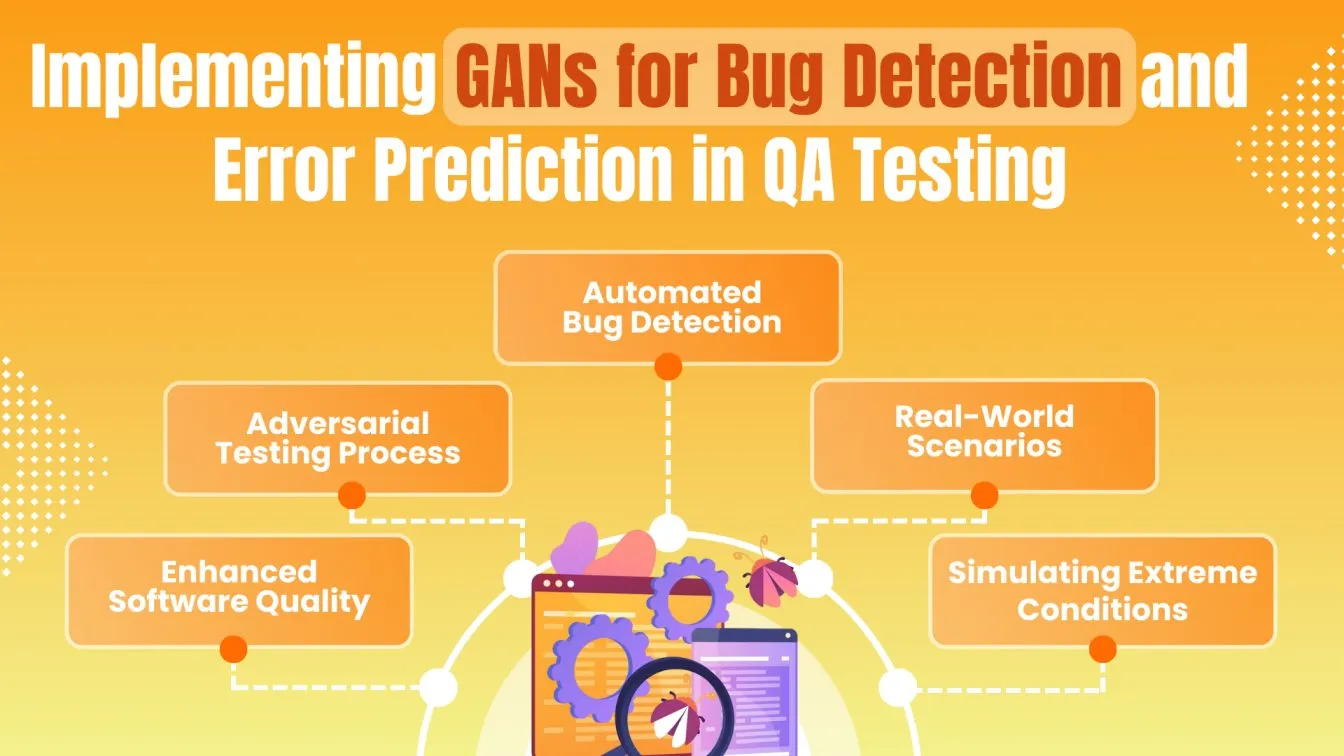
Best Practices for Integrating GANs into QA Testing Pipelines
- It's recommended to start small when incorporating Generative Adversarial Networks (GANs) into QA testing. Start by implementing GANs in non-critical testing procedures, which enables teams to assess their efficacy without jeopardizing the software's fundamental features. Before extending the use of GANs to more crucial jobs, this methodical approach assists QA teams in better understanding the strengths and weaknesses of these machines.
- Keeping an eye on the quality of the data is essential at every stage. It is crucial to regularly evaluate the data's quality because the accuracy and realism of test data created by GANs determine how useful they are. Testing phases will yield better results and fewer errors if the synthetic data generated is trustworthy and useful.
- To ensure that the deployment of GANs goes as smoothly as possible, close collaboration between QA teams and AI/ML experts is crucial. Technical gaps can be filled and GAN adoption in QA environments accelerated by the experience of AI specialists.
- Utilizing Generative Adversarial Networks (GANs) in the testing process is crucial for enhancing quality assurance. By generating synthetic data from a structured training dataset, organizations can effectively combat challenges like fake news and fake images. Looking to the future of software testing, integrating data-driven testing methodologies powered by GANs will enable teams to produce reliable and diverse test data, streamlining the process and improving the accuracy of results.
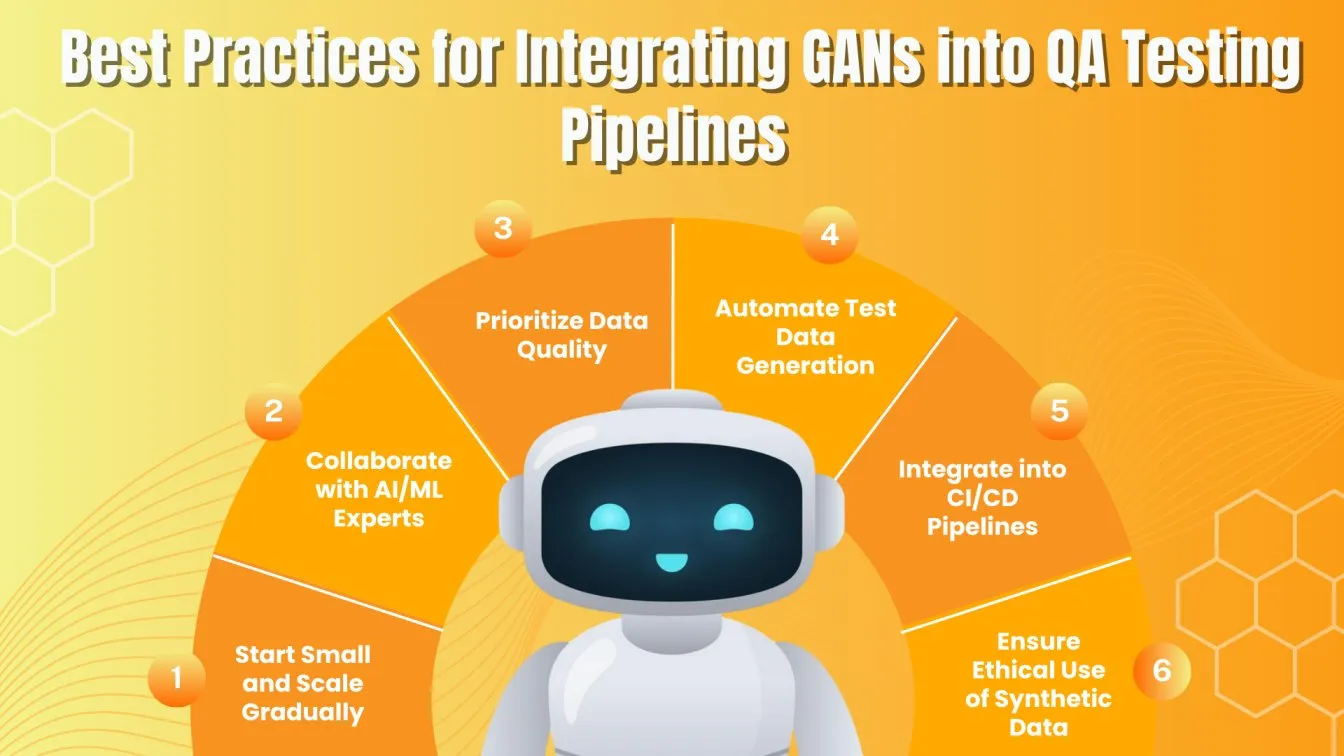
Comparing GANs with Traditional Methods for Test Data Creation
GANs significantly outperform traditional methods of test data creation in terms of speed and data diversity. While traditional methods often rely on pre-defined scripts and manual input, GANs generate varied, realistic, and complex datasets dynamically, allowing for more robust testing.

Key Applications of GANs in Performance and Load Testing
In performance and load testing, Generative Adversarial Networks (GANs) are proven to be quite helpful since they provide a new method for simulating actual user traffic and system stresses. These are the domains in which GANs are utilized:
- Simulating Realistic User Traffic
GANs can generate synthetic user traffic that mirrors real-world usage patterns, making it possible to stress-test applications under conditions that reflect actual user behaviour. This allows QA teams to see how the system performs during peak loads, such as during sales events or product launches. - Identifying Performance Bottlenecks
GANs help reveal performance bottlenecks by simulating large-scale data loads, identifying where the system slows down or fails under pressure. This helps teams optimize system performance before it goes live. - Ensuring Scalability
By generating varied and complex datasets, GANs can simulate massive data traffic, helping businesses ensure that their applications can scale efficiently. Whether it's hundreds or thousands of users, GANs make it easy to assess how well the application handles scaling without performance degradation. - Stress Testing for Peak Loads
GANs are also used to simulate high-intensity traffic during peak times (e.g., Black Friday sales), which helps in determining if the system can handle sudden spikes in user activity without crashing. - Dynamic Data Generation
GANs can generate real-time, dynamic data to simulate different scenarios, such as varying connection speeds, geographic locations, or user preferences. This adds an extra layer of complexity to performance testing, ensuring robustness across multiple environments.
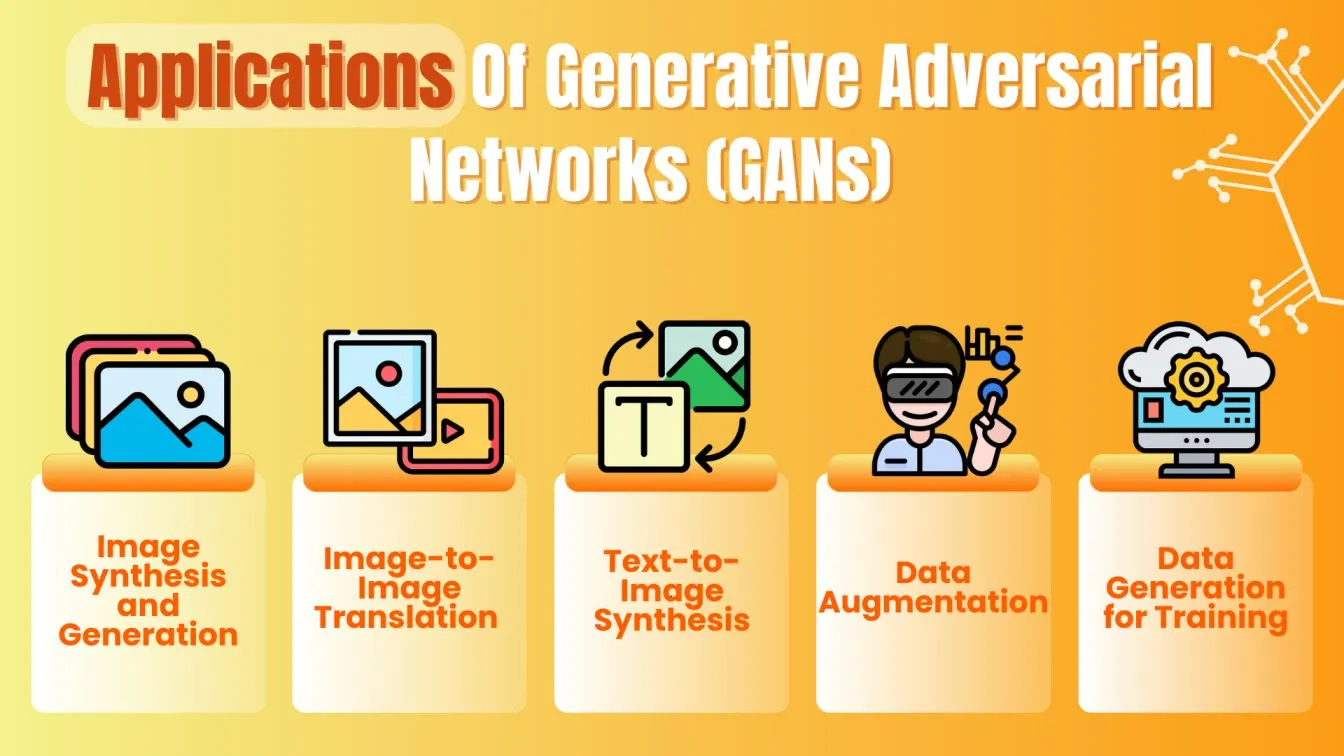
How GANs Can Improve Visual Regression Testing in QA
An innovative approach to enhancing visual regression testing—which verifies that modifications to a software program do not inadvertently affect its visual components—is provided by Generative Adversarial Networks (GANs). This capability allows QA teams to generate realistic images including image translation for testing visual components of applications. Here's how to use GANs to improve this procedure:
- Generating High-Quality Visual Data
This capability allows QA teams to generate realistic images for testing visual components of applications, ensuring that minor discrepancies are detected. This helps identify even minor visual discrepancies between different versions of an application. - Automating Visual Testing
By automating the creation of visual test cases, GANs reduce the manual effort required to test UI/UX elements across different screen sizes, resolutions, and devices. This automation ensures that visual consistency is maintained across the board. - Detecting Pixel-Level Changes
GANs are capable of detecting pixel-level changes that may be hard to spot manually. This allows QA teams to find even the tiniest visual bugs that might affect user experience, ensuring that the interface remains visually intact post-updates. - Simulating Visual Layouts for Different Environments
GANs can simulate different lighting conditions, device screens, and user settings, ensuring the app looks and functions perfectly across diverse environments. This testing is crucial for apps with broad user bases across different platforms. - Faster Regression Testing
With the ability to quickly generate synthetic visuals, GANs significantly speed up the process of visual regression testing. Instead of manually checking each visual element after every update, GANs can automatically generate and compare new visuals in a fraction of the time.
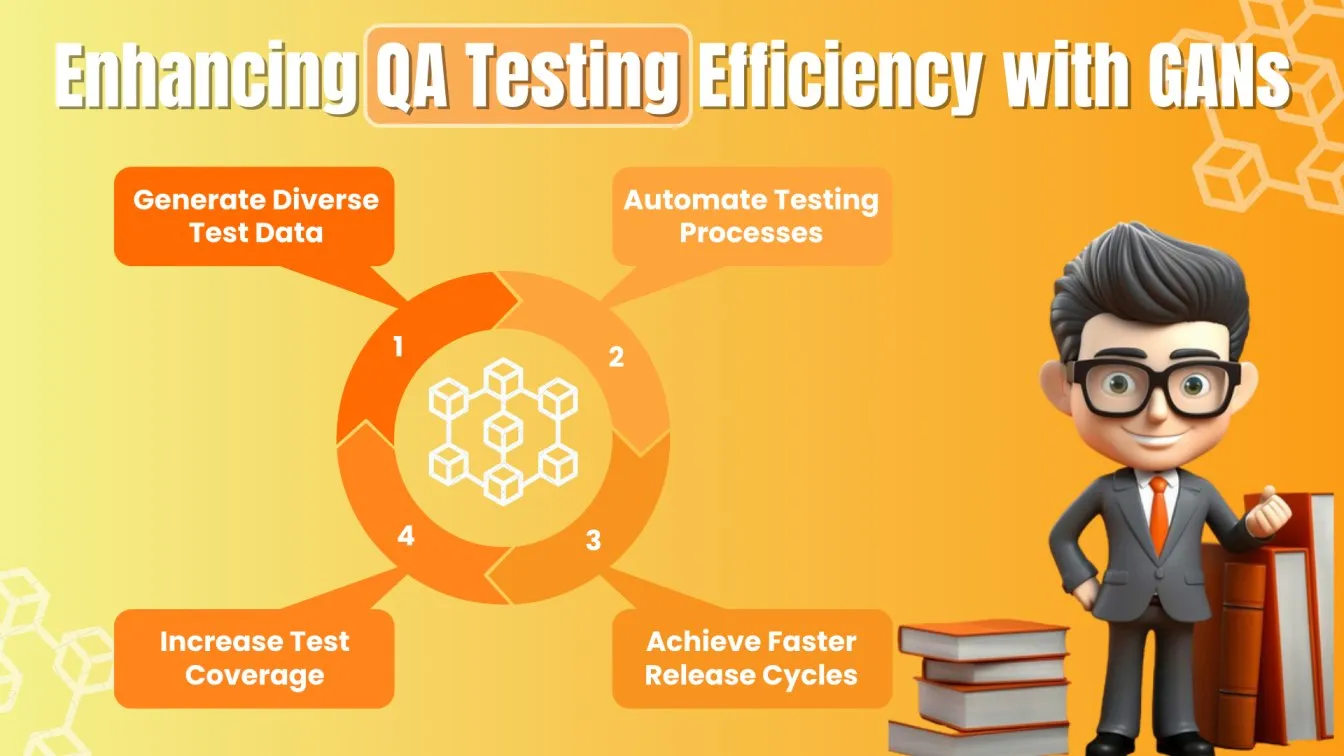
GANs in Data Augmentation for QA Testing
Making sure that all possible scenarios are covered in QA testing can be difficult, particularly when working with complex systems. Teams can utilize GANs to create diverse datasets that simulate different user behaviors, device setups, and network settings, saving time and effort compared to manually building each test case.
QA teams may cater for edge situations and uncommon events that could otherwise go untested by utilizing GANs to adjust various variables. GANs facilitate more efficient and comprehensive testing by lowering manual labor and enhancing test coverage through their capacity to quickly build complete datasets.
To put it briefly, using GANs for data augmentation expedites the testing process and enables teams to mimic a wider range of scenarios, which aids in the discovery of flaws or issues that may evade detection in more conventional testing methodologies. As a result, the software is stronger and more dependable, capable of operating well in a range of real-world situations.
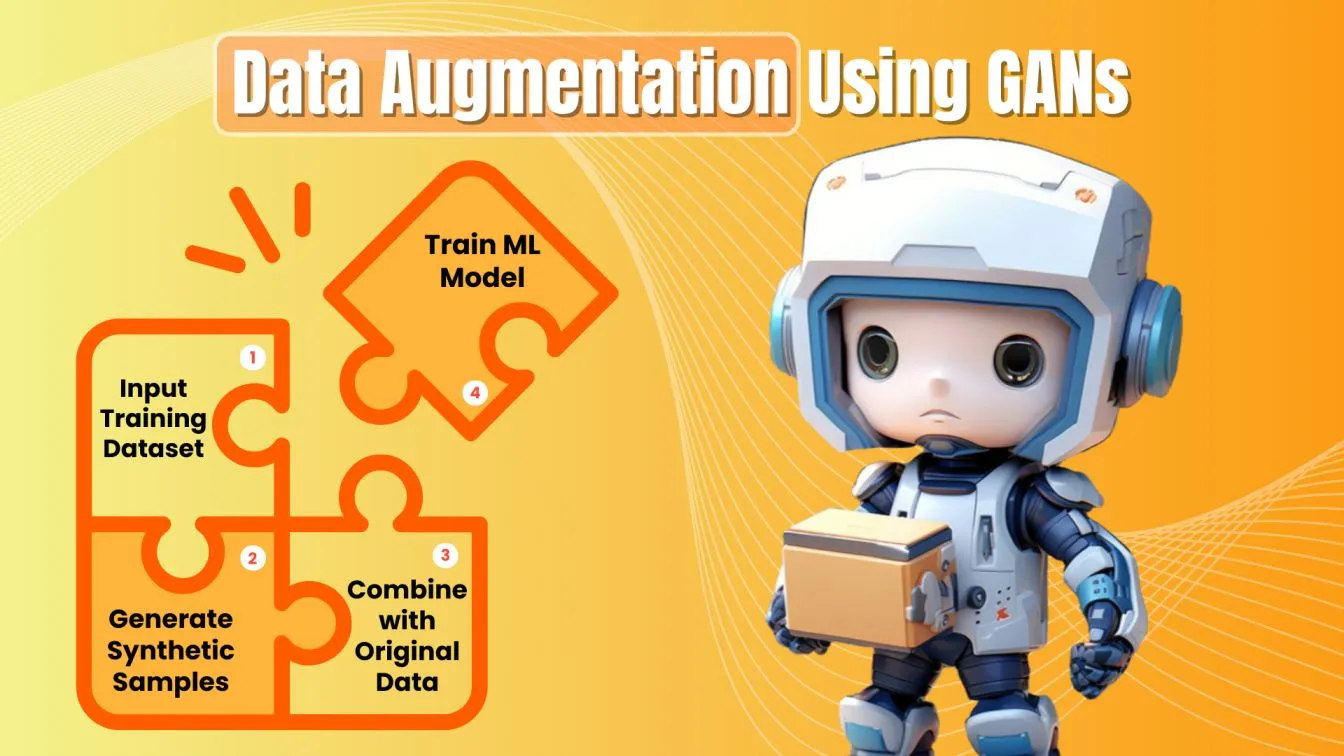
Utilizing GANs for Automated Test Case Generation
GANs simplify automated test case creation by generating synthetic data that covers a wide range of user interactions. This reduces the need for manual scripting, speeding up test creation and execution. Automated test generation ensures consistent and accurate results, minimizing human error and improving overall testing efficiency. As one of the most effective generative models, GANs facilitate the efficient generation of data for testing purposes
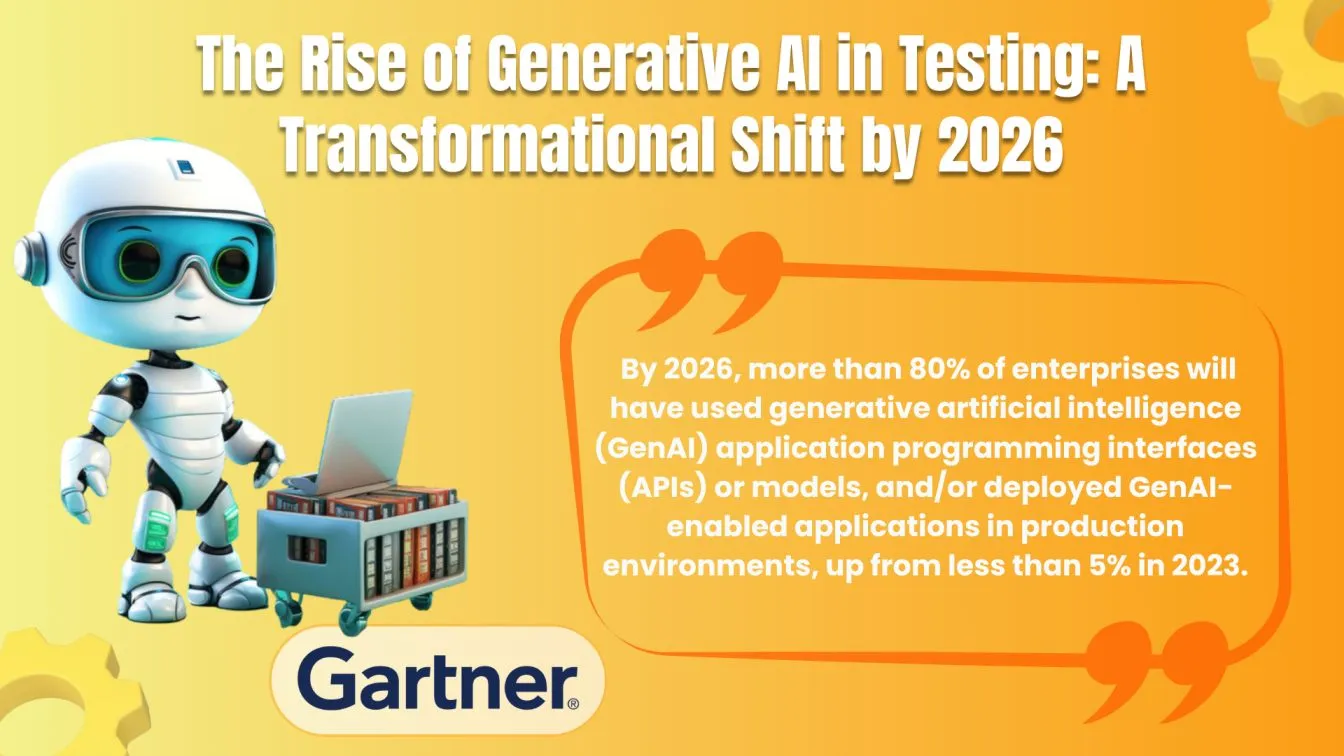
GANs in Predicting Software Defects and Bugs
GANs analyze historical data to predict software defects before they occur. By recognizing patterns from past tests, they can simulate conditions that lead to bugs, allowing QA teams to proactively address issues, improving software stability and performance.
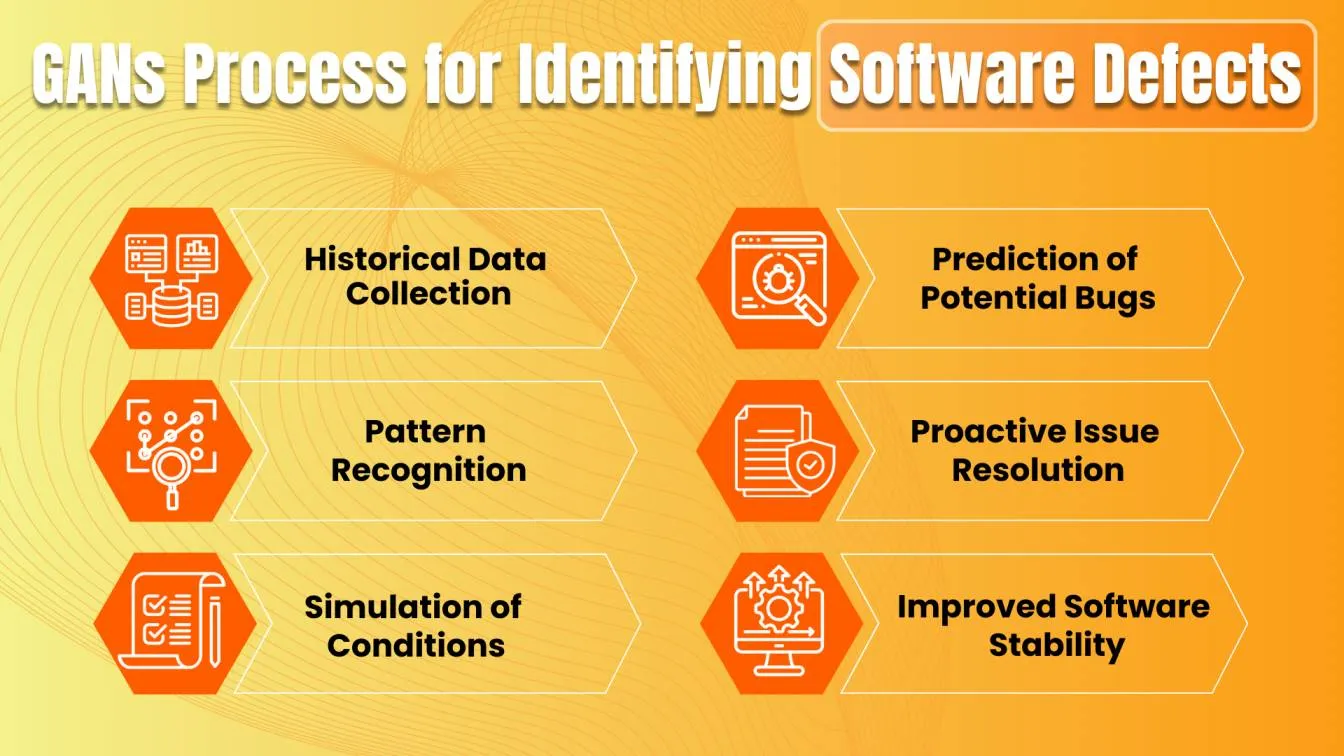
Limitations of GANs in QA Test Automation
Although GANs are an effective tool for QA automation, they are not without limits. Particularly in situations that are extremely specialized or complex, GANs might not always generate data that is entirely realistic. In these situations, the synthetic data might not have the subtleties needed for appropriate testing, which would reduce the test's overall efficacy.
Furthermore, not all QA teams may possess the advanced machine learning skills needed for GANs. GAN model implementation and maintenance can be challenging, particularly for smaller teams or enterprises with tighter budgets.
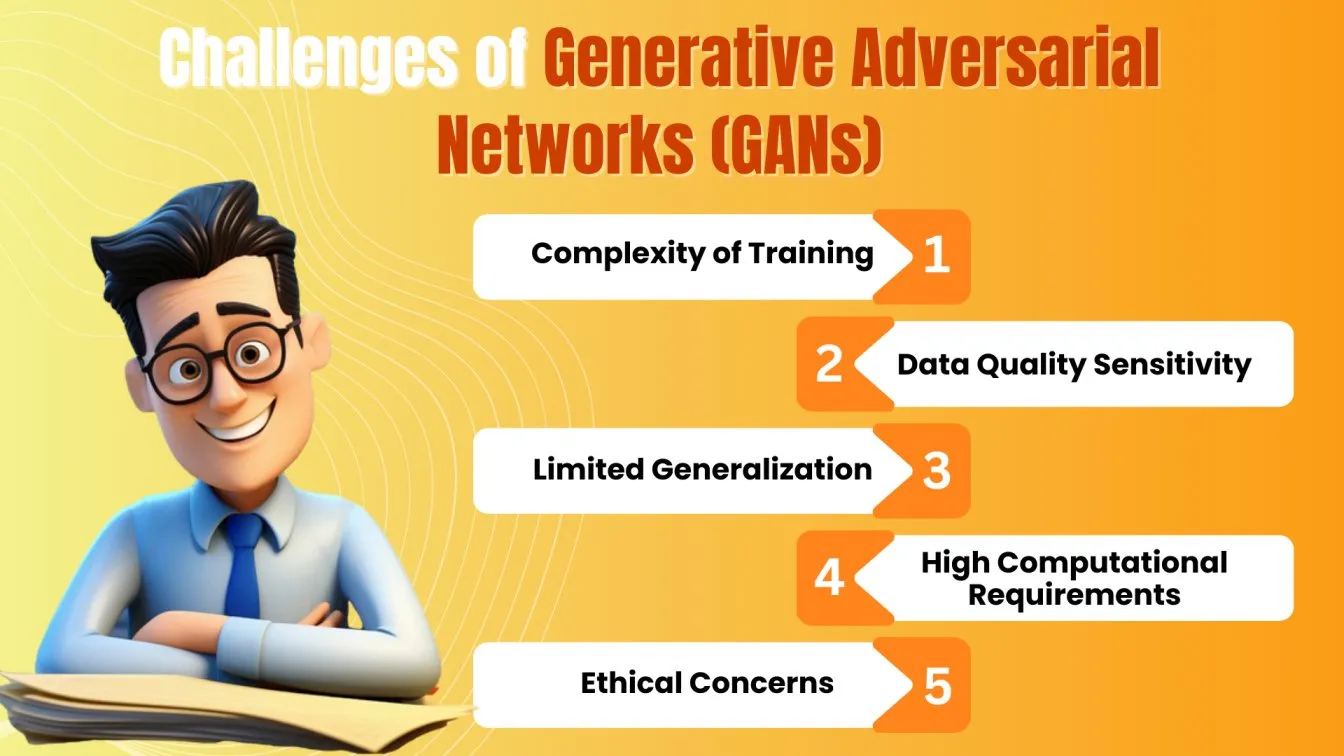
Future Trends in the Application of GANs for QA Testing
GAN technology is anticipated to play an increasingly larger part in QA testing as it develops. 📈 More complex data production may be a trend in the future as GANs provide testing datasets that are more varied and realistic. 🌐 More likely advances include improved bug detection systems that can predict software failures more accurately. 🐛 GANs are widely recognized as generative models due to their ability to create synthetic data that closely resembles real-world data. 🤖 Another possible development is deeper integration with AI-driven testing platforms, which would increase the intelligence and adaptability of QA procedures. 🌟 By doing so, testing methodologies could be updated and adjusted in real-time, guaranteeing that software is continuously tested in dynamic contexts for increased quality. 🔄
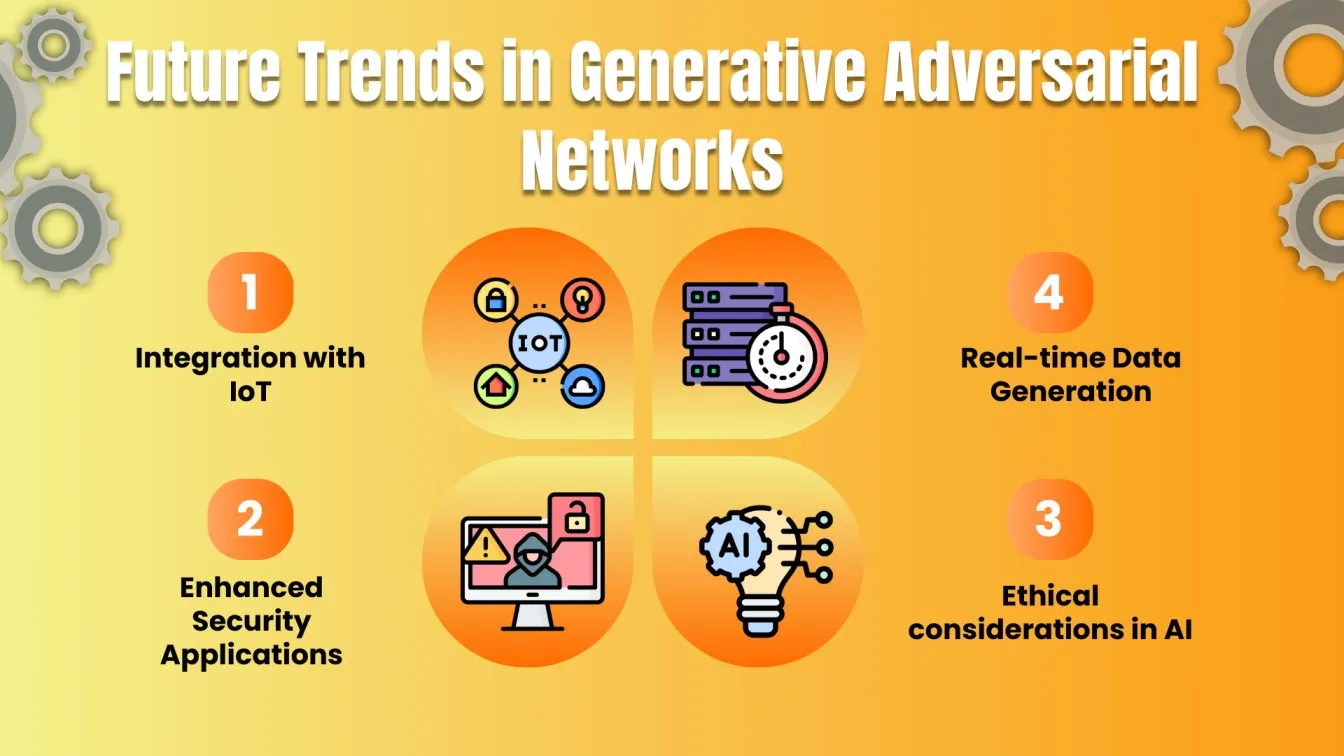
People also asked
👉 How can GANs help in reducing the time spent on manual testing in QA?
GANs automate the generation of test data, drastically reducing the time spent on manual data creation and preparation, leading to faster testing cycles.
👉 Do GANs require extensive machine learning knowledge to be used in QA testing?
While GANs require a basic understanding of machine learning, there are tools and platforms available that simplify the process, making them accessible to QA teams.
👉 What industries can benefit the most from using GANs in QA testing?
Industries like e-commerce, finance, healthcare, and gaming, which require extensive testing with varied data, can benefit significantly from GANs.
👉 Can GANs be used for security testing in QA?
Yes, GANs can generate test cases that simulate attacks or vulnerabilities, making them useful for security testing.
👉 What are the hardware requirements for running GANs in QA testing?
Running GANs requires high computational power, typically involving GPUs or cloud-based solutions .
👉 Are there open-source tools available for implementing GANs in QA testing?
Yes, several open-source frameworks, such as TensorFlow and PyTorch, offer tools for building and training GANs.





%201.webp)

